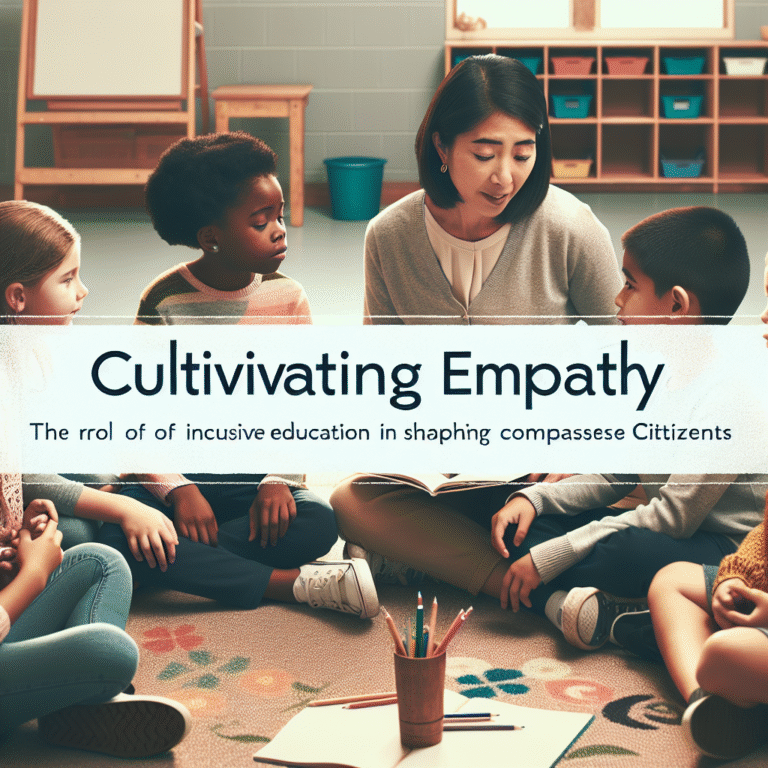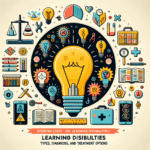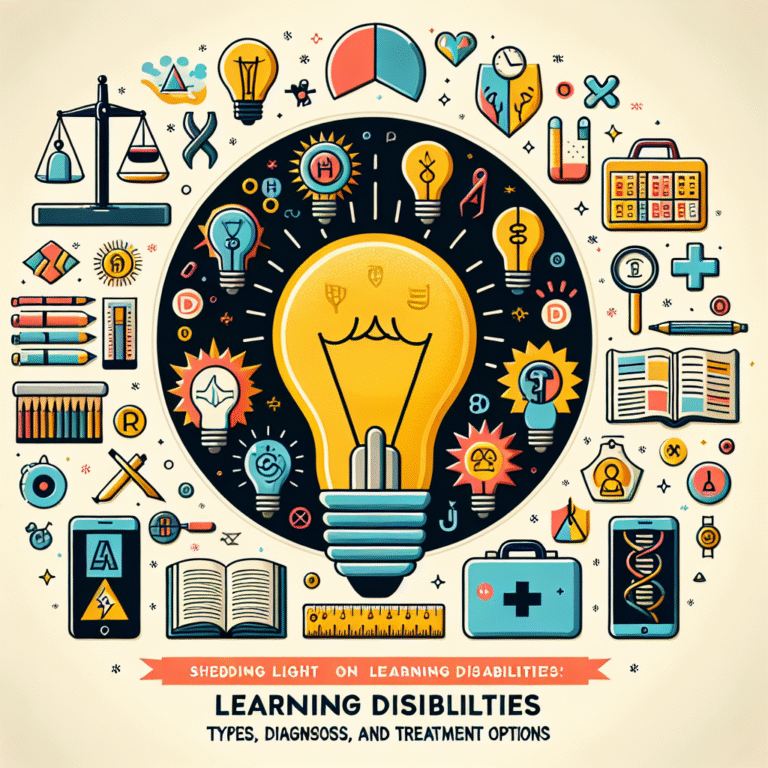
Introduction
Imagine a classroom where every student feels seen, valued, and embraced for who they are—regardless of their background, ability, or learning style. This vision is at the heart of inclusive education: a pathway to equity and understanding in schools. In an increasingly diverse world, fostering an inclusive educational environment is not merely a nice-to-have; it’s essential. Inclusive education promotes not only academic success but also social-emotional well-being, preparing our children for a harmonious future in a pluralistic society.
In this detailed exploration, we’ll delve into the principles of inclusive education, offer real-world case studies, and share actionable insights to support educators and stakeholders in making their classrooms more inclusive.
The Foundation of Inclusive Education
What Is Inclusive Education?
At its core, inclusive education is about ensuring that all students, regardless of their backgrounds or individual needs, have equal access to quality education. It’s based on the belief that every child has the right to learn alongside their peers in a supportive environment. This approach goes beyond mere physical integration; it encompasses social, emotional, and academic inclusion.
Principles of Inclusive Education
Equity: Every student should receive the resources and support they need, tailored to their unique circumstances.
Diversity: Embracing different abilities, cultures, and perspectives enriches the learning experience.
Community: Schools should foster a sense of belonging where students support one another.
- Collaboration: Partnerships among teachers, parents, and community members enhance the educational environment.
The Importance of Inclusive Education
Academic Benefits
Inclusive education promotes academic achievement for all students. Research shows that students in inclusive settings perform better in standard assessments compared to those in segregated environments. When learners engage with diverse peers, they benefit from various perspectives, leading to deeper understanding and enhanced problem-solving skills.
Social Skills Development
Inclusion cultivates social-emotional skills such as empathy, cooperation, and respect for differences. Students learn to appreciate their peers’ unique contributions, fostering a positive classroom culture. According to studies, inclusive classrooms reduce bullying and create a safe space for everyone to express themselves.
Preparing for a Diverse World
Today’s students will navigate a global society characterized by diversity. Inclusive education equips them with the skills and mindset needed for leadership in a pluralistic world. Understanding different viewpoints fosters tolerance and collaboration, essential components for workplace success.
Case Studies
Case Study 1: The Candlewood School Initiative
Background: Candlewood School, located in an urban area, implemented an inclusive education model to support students with varying abilities.
Implementation: Teachers received training on differentiated instruction and classroom management strategies to meet diverse needs.
Outcome: The school reported a 30% increase in overall student engagement and a 20% improvement in standardized test scores over three years.
Relevance: This case exemplifies how targeted training for educators can transform classroom dynamics and foster an inclusive atmosphere, supporting our focus on inclusive education: a pathway to equity and understanding in schools.
Case Study 2: The Harmony Program
Background: A rural school district launched the Harmony Program, designed to integrate arts and technology in inclusive settings.
Implementation: Students participated in collaborative projects that blended artistic expression with academic content, emphasizing teamwork among diverse learners.
Outcome: Participants demonstrated improved communication skills, with feedback indicating that students felt more confident and engaged.
Relevance: This initiative illustrates the innovative ways inclusive education can manifest, enriching the curriculum while enhancing social cohesion.
Visualization of Impact
| Metric | Pre-Initiative | Post-Initiative | Change (%) |
|---|---|---|---|
| Student engagement | 45% | 75% | +30% |
| Standardized test scores | 62% | 74% | +12% |
| Incidents of bullying | 15 per month | 3 per month | -80% |
Challenges in Implementing Inclusive Education
Institutional Barriers
Many schools face systemic challenges, such as inadequate resources, lack of specialized training for educators, and rigid curricular structures. Overcoming these barriers requires a concerted effort from school districts, policymakers, and advocates.
Misconceptions About Inclusion
One significant hurdle is the misunderstanding around what inclusive education entails. Many believe it means lowering standards to accommodate all students, which is a misconception. Instead, inclusion aims to elevate the learning experience for everyone by fostering adaptations that challenge and support all learners.
Strategies to Foster Inclusive Education
Professional Development: Educators should receive ongoing training to understand diverse needs and learn adaptive teaching strategies.
Family Engagement: Collaborating with families improves communication and ensures that students’ unique backgrounds and needs are considered.
Peer Support Programs: Implementing mentorship programs where older students assist younger ones can cultivate a sense of community and positive reinforcement.
- Flexible Curriculum: Schools should adopt a curriculum that allows adaptations and accommodations, ensuring every student can grasp the content at their own pace.
The Role of Technology
Technology plays a vital role in facilitating inclusive education. Assistive devices, educational software, and online platforms can provide personalized learning experiences tailored to individual needs. Tools like text-to-speech software and interactive learning applications can empower students, ensuring no one falls behind.
Conclusion
Inclusive education: a pathway to equity and understanding in schools is more than an educational approach; it’s a moral imperative. The benefits of inclusive practices extend beyond academics, nurturing socially responsible individuals ready to thrive in a diverse world. By championing inclusive initiatives, we can build classrooms that reflect the richness of our societies and foster mutual respect and understanding.
As parents, educators, and community members, our roles are to advocate for inclusive systems. Let us seize this opportunity to want for our children what is best: a fair chance to learn and grow together, celebrating both our differences and commonalities.
FAQs
1. What is the difference between mainstreaming and inclusion?
Answer: Mainstreaming refers to placing students with disabilities in general education classrooms, often with limited support. Inclusion goes further, integrating all students in a supportive environment conducive to everyone’s learning.
2. How can teachers adapt their lessons for an inclusive classroom?
Answer: Teachers can differentiate instruction by providing varied materials, allowing for multiple forms of assessment, and using cooperative learning strategies that enable peer support.
3. What role do parents play in inclusive education?
Answer: Parents are crucial stakeholders who can advocate for their children’s needs, collaborate with educators, and contribute insight about their child’s strengths and challenges.
4. How can schools assess their inclusivity?
Answer: Surveys, classroom observations, and conversations with students and parents can help schools evaluate the inclusivity of their practices and identify areas for improvement.
5. Are there specific legal frameworks supporting inclusive education?
Answer: Yes, laws such as the Individuals with Disabilities Education Act (IDEA) in the United States mandate inclusive education practices, ensuring that all students have access to a free and appropriate education.
By nurturing a commitment to inclusive education, we can create pathways to greater equity and understanding, benefiting not just students but entire communities. Let’s take action, transform our schools, and embrace the unique tapestry that every student contributes.

















